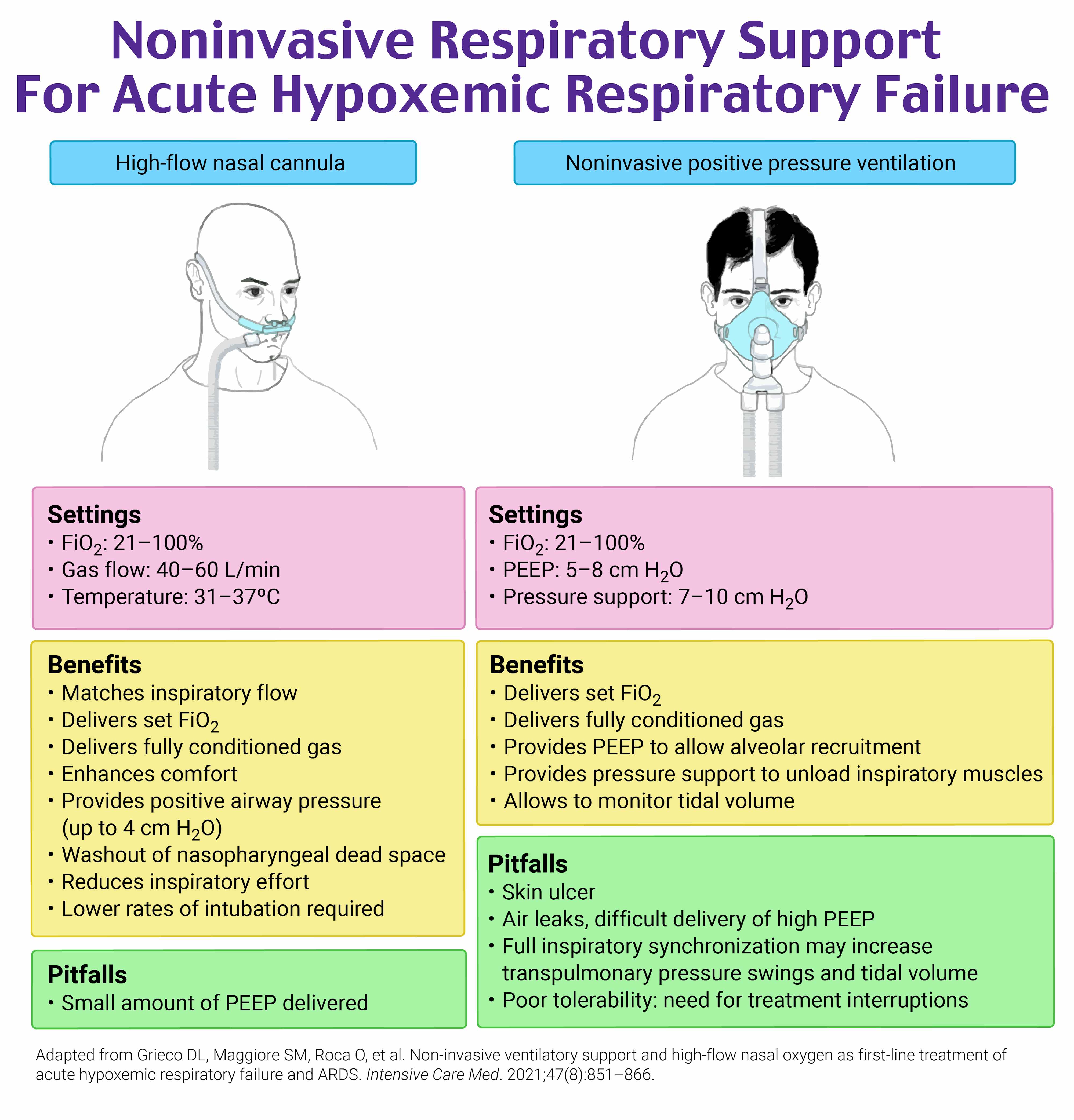A is the correct answer. Why?
Get More MyEMCert Questions
The most up-to-date questions for all current modules.
Explanation
The respiratory distress secondary to acute hypoxemic respiratory failure seen in this patient would most benefit from high-flow nasal cannula oxygen. The etiology of acute respiratory failure may be categorized as hypoxemic, hypercapnic, or a combination of both, with each category harboring a broad array of differential diagnoses. Arterial blood gas sampling aids in defining the type of respiratory failure, in addition to clues from the history and physical examination. Further evaluation regarding the underlying etiology typically includes a laboratory and imaging workup tailored to the patient. In hypoxemic respiratory failure without hypercapnia, high-flow nasal cannula oxygen has been shown to decrease work of breathing and improve oxygenation. A 2014 randomized crossover study by Rittayamai et al. found a reduction in the work of breathing in patients receiving supplemental oxygen by high-flow delivery systems, as evidenced by improved respiratory rate and oxygenation, downtrending tachycardia, and greater patient comfort. A proposed mechanism of these benefits is the provision of PEEP provided by the high-flow mechanism of delivery, the delivery of more flow than the patient demands, and the potential for washout of carbon dioxide. Due to the realized respiratory and mortality benefits, the American Board of Emergency Medicine recognizes high-flow nasal cannula oxygen as a key advance that should be considered as first-line respiratory therapy for patients without COPD who are presenting with hypoxemic respiratory failure.
Invasive positive pressure ventilation (B) may eventually be required if this patient’s respiratory distress does not improve but would not be the first-line intervention given its invasiveness.
Low-flow nasal cannula oxygen (C) would not provide adequate flow or fraction of inspired oxygen to meet this patient’s respiratory requirements.
Noninvasive positive pressure ventilation (D), such as continuous positive airway pressure or bilevel positive airway pressure, would provide adequate flows and fraction of inspired oxygen to meet this patient’s flow demands. However, in this patient without COPD with hypoxemic respiratory failure, high-flow nasal cannula oxygen is recommended first.
